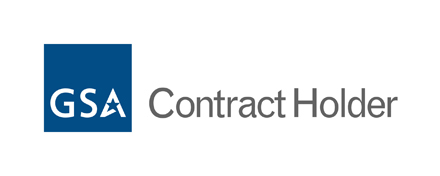The SLR test is a popular test often used for back patients. Common questions to ask during an SLR test include:
- Is there always a nerve root involvement in the case of a positive SLR?
- Does a positive SLR only cause leg pain?
- What about back pain on testing?
Test first on the pain-free side
Firstly, we have to find out which range of movement is normal for this particular patient. Secondly, the patient needs to distinguish between a “normal” (painful) stretching of muscles and his actual symptoms. So, always perform the SLR bilaterally.Don’t miss a painful arc
Since a painful arc at SLR is not uncommon, we should not abandon the test as soon as pain is provoked. The moment we provoke pain, ask for the localization of the pain and then continue with the passive movement, possibly provoking a painful arc. A painful arc is typical for a small and easy reducible internal derangement.Add accessory neck flexion on testing
First, go to the end of the movement, interpret pain and range of motion, then add accessory active neck flexion. If the added neck flexion affects the pain, then this is a clear dural test: we exclude the sacroiliac joint, the facet joints or the hamstrings as the cause of pain, and we firstly think of a lumbar internal derangement. We can expect three possible reactions :- No influence on the pain
- More pain (in the back, gluteal area or leg)
- Less pain
The limitation is mostly bilateral if the pain in the back is central/bilateral, e.g. in an acute lumbago, a large central protrusion compresses the dura mater resulting in clear dural signs.
A unilateral internal derangement can cause a unilateral limitation of SLR, or a limitation which is more prominent on one side. When the compression of the dura ceases, the range of movement becomes normal again.
The SLR is a very useful criterion during a treatment session by e.g. manipulation. We can easily follow the gradual reduction of the disc protrusion/internal derangement by means of the evolution of the SLR.
Example 1: a patient with backache and 30° limitation of SLR
We start manipulation using SLR as a control test criterion in-between the maneuvers. After a first manipulation, the test shows about 10° limitation. After the next manipulation, SLR becomes negative, although there is no full reduction yet. Some movements in standing may still be painful. We continue our manipulative strategy, but from now on the positive movements in standing become our new control test criterion.Example 2: a three week old sciatica with 30° limitation of SLR
The treatment is e.g. daily mechanical traction; every day, the SLR is tested before traction begins. At the end of the first week, only 10° limitation remains. During the weekend, the patient takes an excursion with his family; he sits in his car for hours, and when he comes back on Monday he has again 30° limitation of SLR.We see that the situation is worse again, but we do not know yet how much worse. So, we do the complete examination, and if we do not find any neurological deficit, we go on with traction.
If, however, we find neurological deficit, we know that the protrusion has become too large and therefore irreducible and we have to consider other treatment options.
The six SLR stages:
- SLR is negative: a minor disc protrusion/internal derangement is still possible.
- SLR is painful, not limited: the protrusion cannot be large.
- Painful arc on SLR: again, this must be a small easily reducible internal derangement.
- Painful, limited, without neurological deficit: a somewhat larger protrusion, interfering with mobility, not with conduction.
- Painful, limited, with neurological deficit: severe compression, not only of the dural sleeve about the nerve root, but also of the parenchyma. Both mobility and conduction are disturbed.
- Negative (no limitation, no pain) but with neurological deficit. The patient has had a sciatica for some time. Now thepain gets even worse for minutes or hours or even days, after which rather suddenly the pain disappears completely and SLR becomes negative again. This is an ischaemic root atrophy: the protrusion is maximal, the compression is so severe that the nerve root has become ischaemic. Stretching it causes no protective reflex anymore and SLR ceases to hurt. There is motor and sensory deficit, possibly with loss of knee or ankle jerk. The patient has become symptomatically better but anatomically worse.
Rarely, the SLR is slightly limited with end range pain: if repetitive testing doesn’t affect the symptoms, this might suggest root adhesions. This is a typical “Dysfunction syndrome”, which has its own particular clinical image and treatment strategy.
I hope this provided you with some inspiration…there’s more to come in the next blog post. See below for a companion video.
Questions? Feedback?
Email Steven De Coninck, chair ETGOM at info@cyriax.eu.Save 10% on online courses
Be more efficient. Learn to improve your diagnostic and therapeutic skills anywhere, anytime.Click here to learn more and save.
Use the “OPTPOM” bonuscode to sign in on the online learning platform
(Click for instructions on how to redeem your discount)







